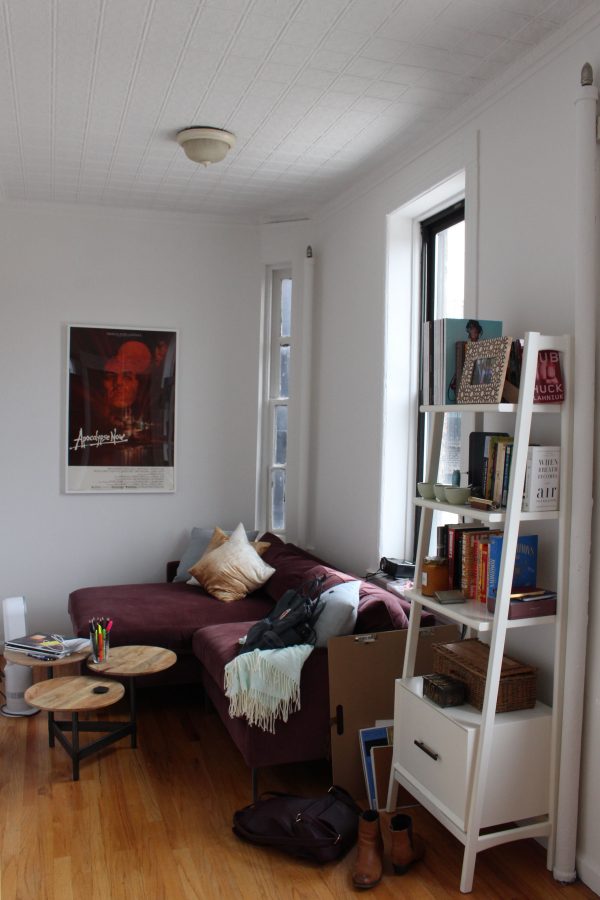Living in a Shoebox: A Guide to Off Campus Housing
Despite the limitations of her space, sophomore Agne Numaviciute managed to create a sense of home in her small, one-room apartment.
October 3, 2016
He used to have no place to walk; his room was simply a bed. It takes her less than eight steps to get from one wall to the next. It takes him two steps before he runs into his roommate.
This is what it is like to rent in New York City.
With only about 12,000 undergraduate students getting on campus housing with NYU, the others are left to find somewhere to live in the concrete jungle. An average apartment in New York City is 550 square feet for $2,300, according to Naked Apartments, which is about the size of a garage.
Given that not every NYU student can afford a beautiful, spacious apartment in Manhattan, how are they managing?
Tisch junior Kyle Schmidt faced the problem many transfer students face: having to find an apartment while still living at home. Not able to trust the internet as a source, Schmidt settled for staying with a friend of a friend.
With all the New York creativity at work, Schmidt’s friend transformed his simple common area into a “room” for Schmidt — a mattress and a curtain — which Schmidt called home all summer.
After the summer semester, Schmidt was ready for his own place. While his new room is just as small as his old space, with room only for a twin bed and a desk, Schmidt has learned to be content with his bed, four walls and a door.
NYU students moving here are quickly learning to adapt to the New York standards.
CAS sophomore Lourania Oliver came to New York early before the semester started in order to find a place that would fit all her needs. After exploring her options in the city and meeting some interesting roommates, she decided to live on her own. Since the option to live alone near campus doesn’t come cheap, Oliver settled for a 200 square feet studio, where she has to sleep on a couch.
It takes less than five seconds to walk from one end Oliver’s apartment to another tiny area with a small kitchen, a bathroom to the right and just enough room for a couch against the left wall. Despite the high rent for the low expectations, Oliver has learned to adjust her outlook.
“I don’t need much space,” Oliver said. “I like it because it takes two steps to get to my kitchen and another step to my bathroom.”
Rich Hurley, the Associate Director of Student Resources, has counseled many students through off-campus housing issues, and understands the struggles that many of them have to face.
“No matter where you’re coming from, your expectations of what you’re going to find and the price you’re going to pay is just so monumentally different,” Hurley said. “The other thing that is always a bit surprising is the size and the look of the apartment. Everyone wants to find a deal, but in this process it’s really about being able to sort through your wants and your needs, and noticing the difference between those two.”
While most people might not consider Tisch sophomore Beau Hart’s room anything special, he considers his place a steal by New York standards. Because he shares his room with a roommate, the only space Hart calls his own is his loft bed. Since it is all he has, it serves three purposes: sleeping on top, studying on the desk below and hanging his clothes underneath
“It’s small compared to Utah, but everything here is minuscule compared to where I’m from,” Hart said. “Plus people back home eat up the photos on social media. I’ve always wanted to live in New York growing up so that’s been the dominant factor in my attitude and happiness.”
Although NYU students may have to navigate the scary maze of housing that comes with weird tenants, expensive brokers and possible rat infestations, most students would live with that tradeoff if it means they get to live in the greatest city in the world.
A version of this article appeared in the Sunday, Oct. 3 print edition. Email Faith Gates at [email protected].
























































































































































